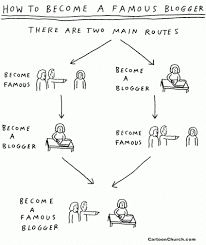 |
| You Tube image |
“Go it alone,” she murmurs sleepily when I poke her. Okay, here goes number 5...
Driving through the backroads of Southern Ontario around the Thanksgiving weekend was pure delight. For some, fall is a sad time, but I just love almost everything about it: the leaves sporting gorgeous colours, the sun’s distinctive mellow glow, the seedy heads of weeds waving in the ditches
-that’s October.
November? Well, now, that’s another story. No colour, lots of wind and rain, a reminder that winter is coming. Wouldn’t it be good to just skip November? Lock it up and throw away the key? It turns out I’m not the only one feeling this way. I came across this quote on my FB page today. It’s a theory devised by Kurt Vonnegut and presented to a graduation class in 1978.
“There are six seasons instead of four. The poetry of four seasons is all wrong for this part of the planet, and this may explain why we are so depressed so much of the time. I mean, Spring doesn’t feel like Spring a lot of the time, and November is all wrong for Fall and so on. Here is the truth about the seasons.
“Spring is May and June! What could be Springier than May and June? Summer is July and August. Really hot, right? Autumn is September and October. See the pumpkins? Smell those burning leaves. Next comes the season called “Locking.” That is when Nature shuts everything down. November and December aren’t Winter. They’re Locking. Next comes Winter, January and February. Boy! Are they ever cold! What comes next? Not Spring. “Unlocking” comes next. What else could cruel March and only slightly less cruel April be? March and April are not Spring. They are “Unlocking””
Brilliant! We’re approaching the season of Locking: the planet is shutting down for maintenance.
Oh, wait, there’s a slight stirring. Is my muse going to step in and finish this for me? But all I get is a question. “So what?” she mutters.
I ponder Vonnegut’s message and come up with this: like much in nature, the cycle of seasons applies to life, too. There’s a season when life is springy, when creativity flows and new ideas sprout faster than the weeds in our gardens. There are hot and fertile seasons, when ideas blossom and become beautiful realities. There are mellow golden seasons, when we rest and enjoy the fruits of our labours.
And then comes Locking. We run into a brick wall. Nature – and the flow of life – slows down and eventually shuts the door. Then comes the dormancy of winter. That’s when blogs pile up on the cutting room floor ...
“So that’s why you’re silent these days,” I say to her.
“Aha!” she squawks. “You’re finally getting it. We crows know to keep quiet if we have nothing to say. To be perfectly blunt, I don’t think you have a whole lot to say right now. So why don’t you just put a sock in it and give it a rest?”
That’s blunt, alright. If you have nothing to say, say nothing.
“So what do you think, Crow?” I ask. “Is this Forever? Is it the end of Crow Day One?”
“Knowing you, I doubt it,” she says scornfully. “But I for one will be happy to take a break, catch up with my friends, just do some lollygagging around. This coming up with words and wisdom on a regular basis only works if you’re growing and learning and have something to share. What are you doing to grow yourself?”
Ouch. That hurt.
Locking and Winter don’t feel like good seasons to be in. But nature teaches us that rest is a necessary part of growth.
Crow settles back into her napping mode. I reluctantly let her go. I’m going to miss her. But then again, I know that you can’t keep a good crow down. When the season of Unlocking comes, she’ll be stirring and restless and ready to begin again.
And when she does, I’ll be there.

















































